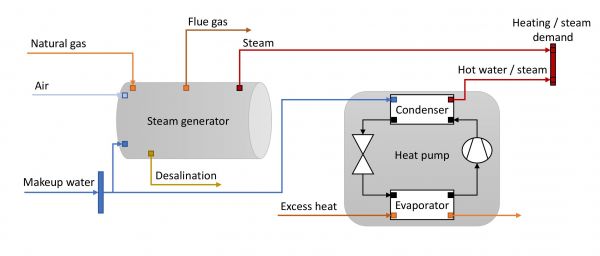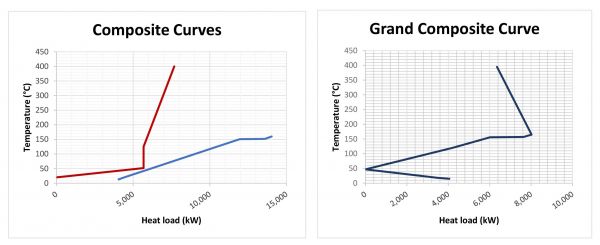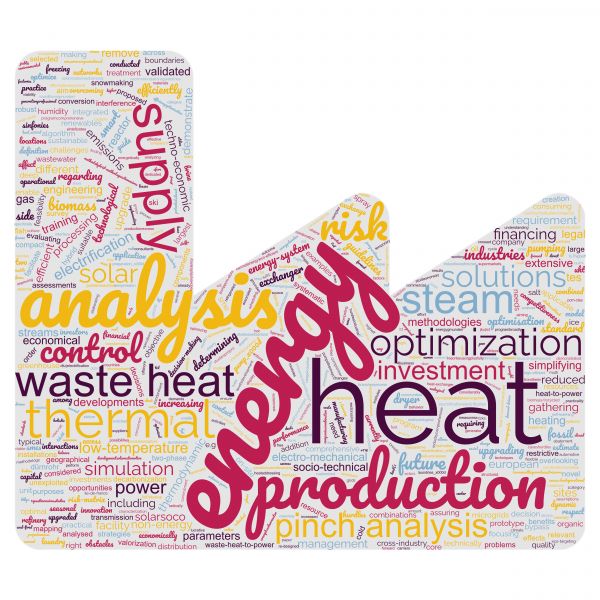IEA IETS Annex 15: Industrial Excess Heat Recover (Phase 3)
Short Description
The international IEA IETS Annex 15 pursues a multi-disciplinary approach to the integrated use of industrial waste heat and aims to optimize energy efficiency in a global context. The focus is on the optimization and (further) development of energy- and cost-efficient technologies for industrial application, taking into account the industrial framework conditions.
The main objective for the national consortium was to integrate Austrian research institutions into the international network and to participate in a platform for the exchange of information and the initiation of international projects in the field of waste heat utilization in industrial processes. The aim was to promote the development of new cooperations and partnerships in industry and research, to standardize and strengthen the transfer of knowledge and the further development of technological competences, and to offer and expand existing know-how. The international consortium collected and processed national knowledge on the following subtasks:
- Subtask 1: Combination of methods for excess heat identification and quantification
- Subtask 2: Consequences for excess heat levels of future changes in industrial energy systems
- Subtask 3: Operational aspects in industrial energy systems
- Subtask 4: Opportunity and risk assessment for excess heat projects
- Subtask 5: Compilation of innovative excess heat projects
By collecting and processing the contributions of the participating nations, it was possible to build up a broad knowledge base on experiences for conducting potential surveys for the use of surplus heat. Future changes in industrial energy systems for the use of surplus heat are of great importance. Potentials for surplus heat need to be considered in an industrial system perspective. The importance of identifying such consequences through system studies has been demonstrated. On a technological level, significant potentials for increasing energy efficiency through the use of high-temperature heat pumps should be mentioned above all. Iterative risk analysis and mitigation, as well as strong stakeholder engagement for better risk identification and mitigation, are recommended as critical strategies for successful implementation of waste heat projects.
The know-how gained was disseminated at the national level through lectures, publications, and involvement in teaching at universities. At the international level, the visibility of Austria as a research location was strengthened through close cooperation and knowledge transfer.
Project Images
Terms of use: The pictures listed underneath the header “Project Pictures” originate from the projects in the frame of the programmes City of Tomorrow, Building of Tomorrow and the IEA Research Cooperation. They may be used credited for non-commercial purposes under the Creative Commons License Attribution-NonCommercial (CC BY-NC).
Participants
Austria, Canada, Denmark, Germany, France, Italy, , Norway, Portugal, Sweden, Switzerland
Contact Address
AIT Austrian Institute of Technology GmbH
Univ. Prof. Dipl.-Ing. Dr. techn. Rene Hofmann (Projektleitung)
Giefinggasse 2, 1210 Wien
E-Mail: Rene.hofmann@ait.ac.at
AEE - Institut für Nachhaltige Technologien
DI Jürgen Fluch
Feldgasse 19, 8200 Gleisdorf
E-Mail: j.fluch@aee.at
TU Wien, Institut für Energietechnik und Thermodynamik
A.o.Univ.Prof. Dr. Heimo Walter
Getreidemarkt 9, 1060 Wien
E-Mail: heimo.walter@tuwien.ac.at
Energieinstitut an der Johannes Kepler Universität Linz Verein (EI-JKU)
Simon Moser
Altenberger Straße 69, 4040 Linz
E-Mail: moser@energieinstitut-linz.at



